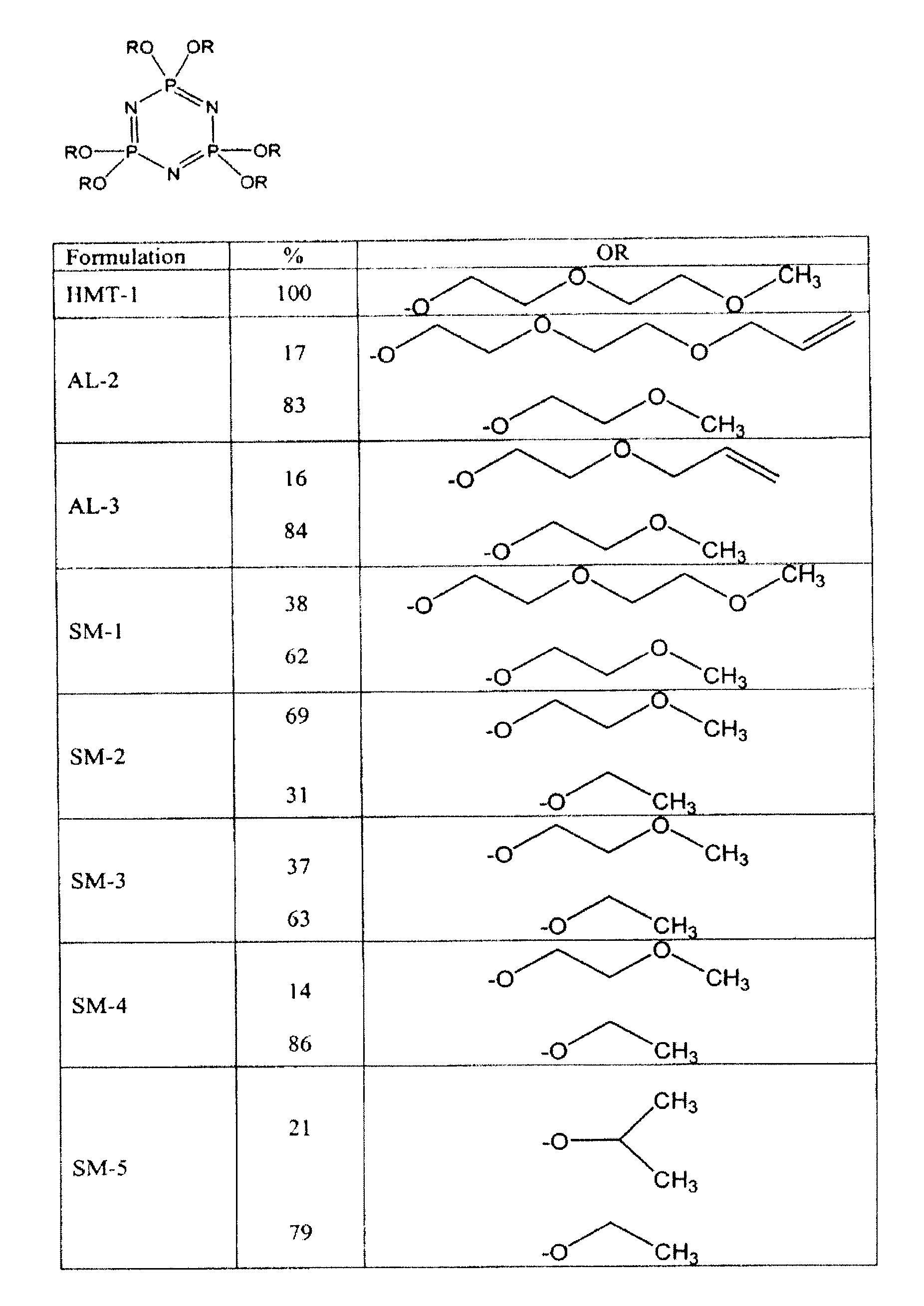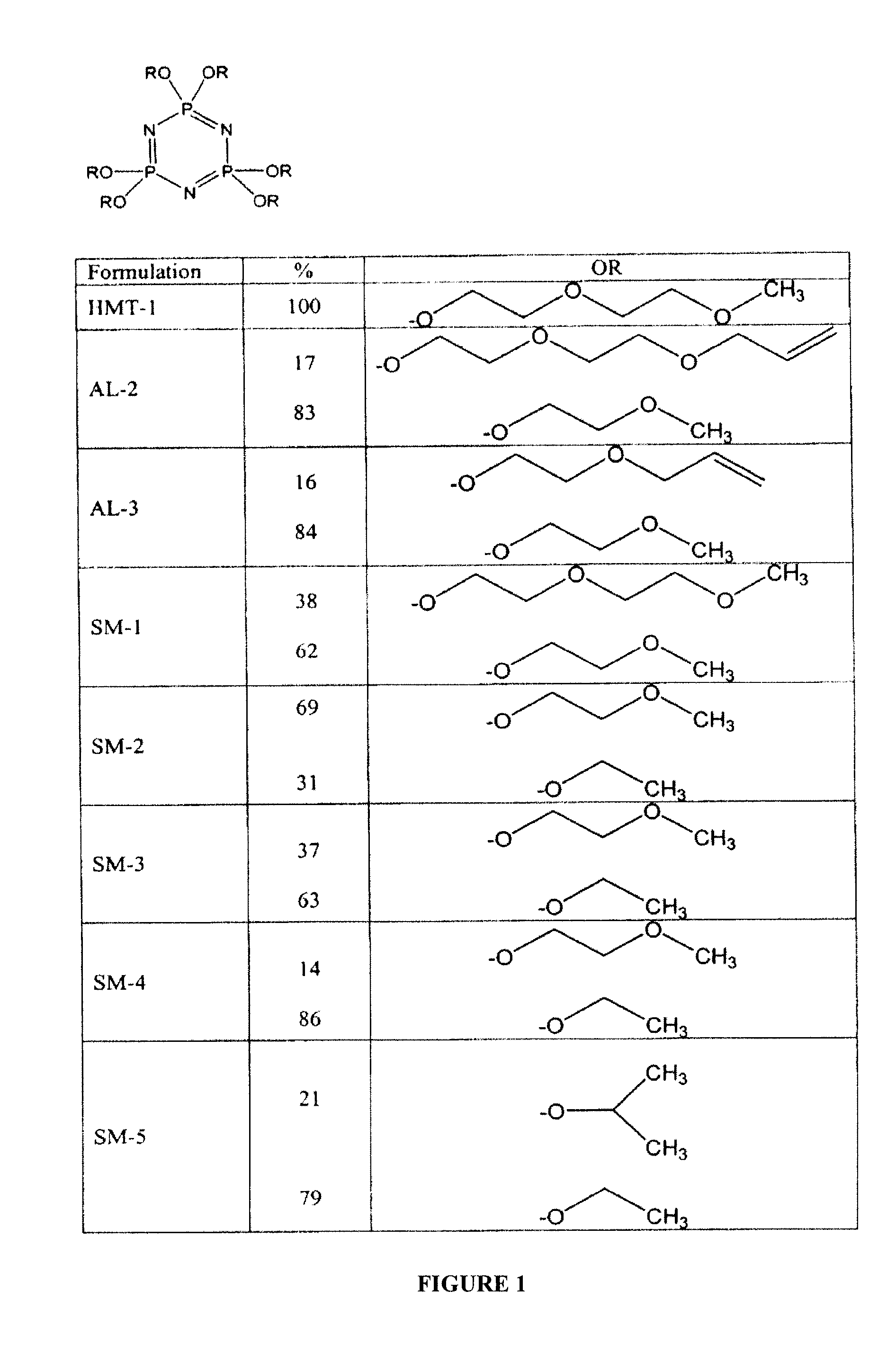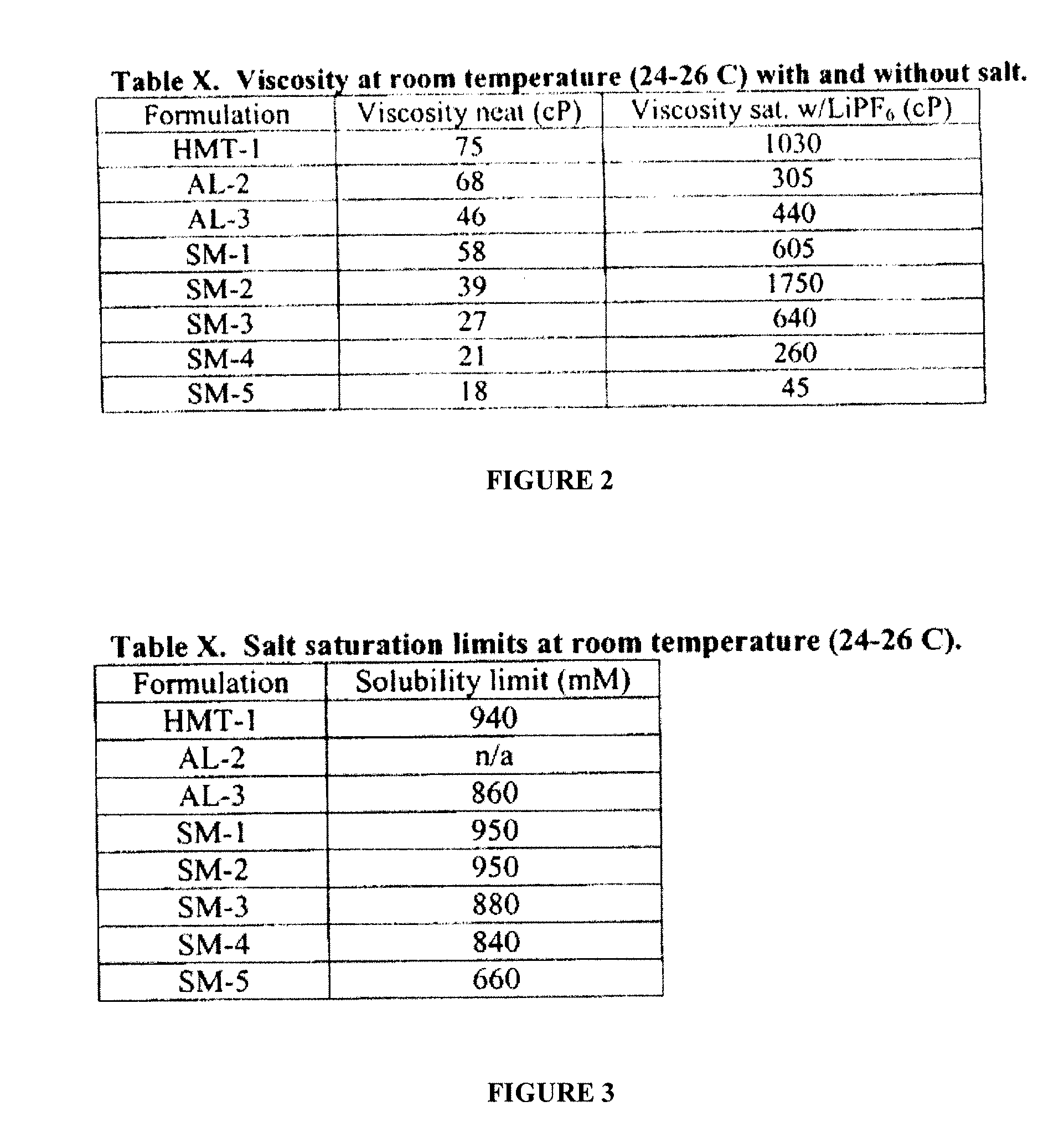Safe Battery Solvents
a battery and solvent technology, applied in secondary cell details, non-aqueous electrolyte cells, chemical processes, etc., can solve the problems of battery use of conventional organic carbonates, system volatility, and serious safety problems, and achieve the effect of improving battery performance and safety
- Summary
- Abstract
- Description
- Claims
- Application Information
AI Technical Summary
Benefits of technology
Problems solved by technology
Method used
Image
Examples
example formulation
[0024]To produce the new formulations, in one embodiment, an organic aprotic solvent, such as 1,4-dioxane, is mixed with an alkali metal or alkali metal hydride to form a reactive alkoxide from its corresponding alcohol as shown in Reaction 1 in FIG. 4. While not particularly described, the same principles enumerated herein apply to thioalkoxides. A solution of percholrophosphazene is added to the reactive alkoxide, and the compound self-assembles, forming a phosphazene compound with a by-product of sodium chloride as shown in Reaction 3a in FIG. 4. Where two or more pendent groups are to be incorporated into the same formulation, the alkoxides and / or thioalkoxides are formed in separate reaction vessels, as shown in Reaction 1 and Reaction 2 in FIG. 4.
[0025]Then, the perchlorophosphazene solution is added to the minor component solution, as shown in Reaction 3a of FIG. 4. After attachment of the minor pendent arms is complete, an excess of the major component is added to the reacti...
PUM
| Property | Measurement | Unit |
|---|---|---|
| Fraction | aaaaa | aaaaa |
| Fraction | aaaaa | aaaaa |
| Angle | aaaaa | aaaaa |
Abstract
Description
Claims
Application Information
 Login to View More
Login to View More - R&D
- Intellectual Property
- Life Sciences
- Materials
- Tech Scout
- Unparalleled Data Quality
- Higher Quality Content
- 60% Fewer Hallucinations
Browse by: Latest US Patents, China's latest patents, Technical Efficacy Thesaurus, Application Domain, Technology Topic, Popular Technical Reports.
© 2025 PatSnap. All rights reserved.Legal|Privacy policy|Modern Slavery Act Transparency Statement|Sitemap|About US| Contact US: help@patsnap.com



